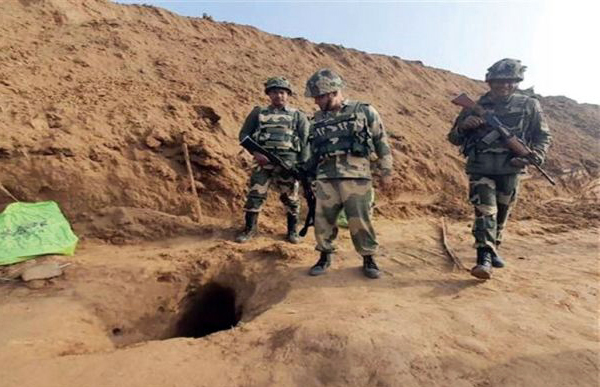Drone-mounted ground penetration radars have been deployed for the first time by the BSF to check for the presence of under-ground tunnels used by terrorists to infiltrate the India-Pakistan International Border in Jammu region, officials said.
The indigenously-made technical gadget has been pressed into action at this front recently as part of the below-the-earth tunnel detection exercise carried out by the force to ensure no terrorist is able to sneak into Indian territory and conduct strikes in Jammu and Kashmir or any other location of the country. These structures have also been used to smuggle narcotics, arms and ammunition.
The BSF has unearthed at least five under-ground tunnels in the about 192 km of the Jammu front (of the India-Pakistan IB) in the last three years.
According to official data, two such cross-border tunnels were detected in 2020 and 2021 each, while one was found last year and all of them were detected in the Indreshwar Nagar sector of Jammu.
“The force has procured a smart technical tool to counter the menace of under-ground tunnels that have been reported regularly along the Jammu region of the India-Pakistan IB. More than one drone-mounted ground penetration radars have been deployed in the region to check these clandestine structures used by terrorists to infiltrate into India from Pakistan,” a senior BSF officer told.
Officials working on the ground said the radars being currently deployed have been developed by an Indian manufacturer and they work by emitting strong radio waves to check for the presence of tunnels under the ground and to map their stretch.
While the specific details of the radars cannot be disclosed, the new tools have been added to the BSF surveillance paraphernalia for assisting ground troops undertaking anti-tunnelling exercise.
Its efficacy is under study as of now, the officials said.
The radars are mounted on the drones in order to give them better access to such terrain along this front, which is difficult for the ground teams to reach, they said.
Usually the surveillance for hidden tunnels is undertaken in the range of about 400 metres from the border fence.
The anti-tunnelling surveillance teams of the BSF remotely control the drone when they are out to comb a specific area on the front and they backup the ‘flying radar’ with their traditional system of checking for tunnels with the help of hand-held deep search and mine detection tools, they said.


















